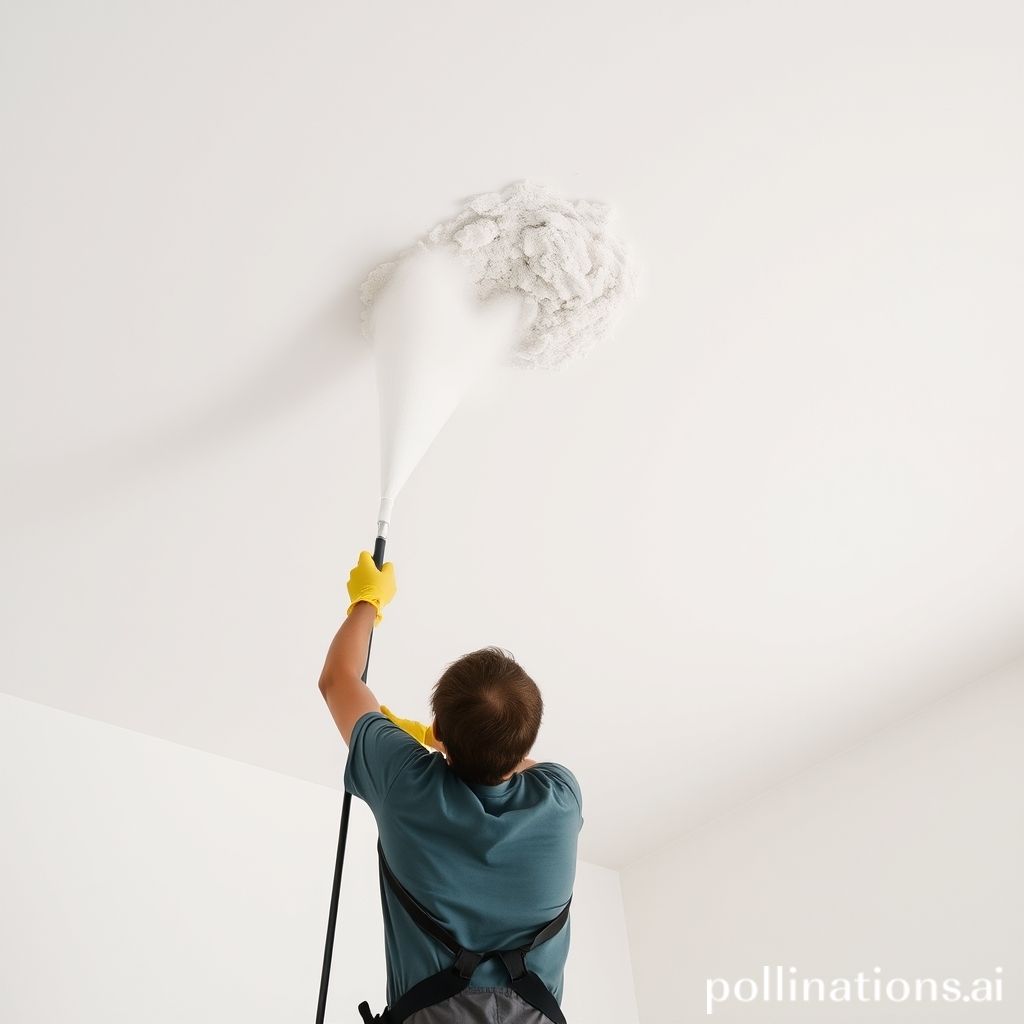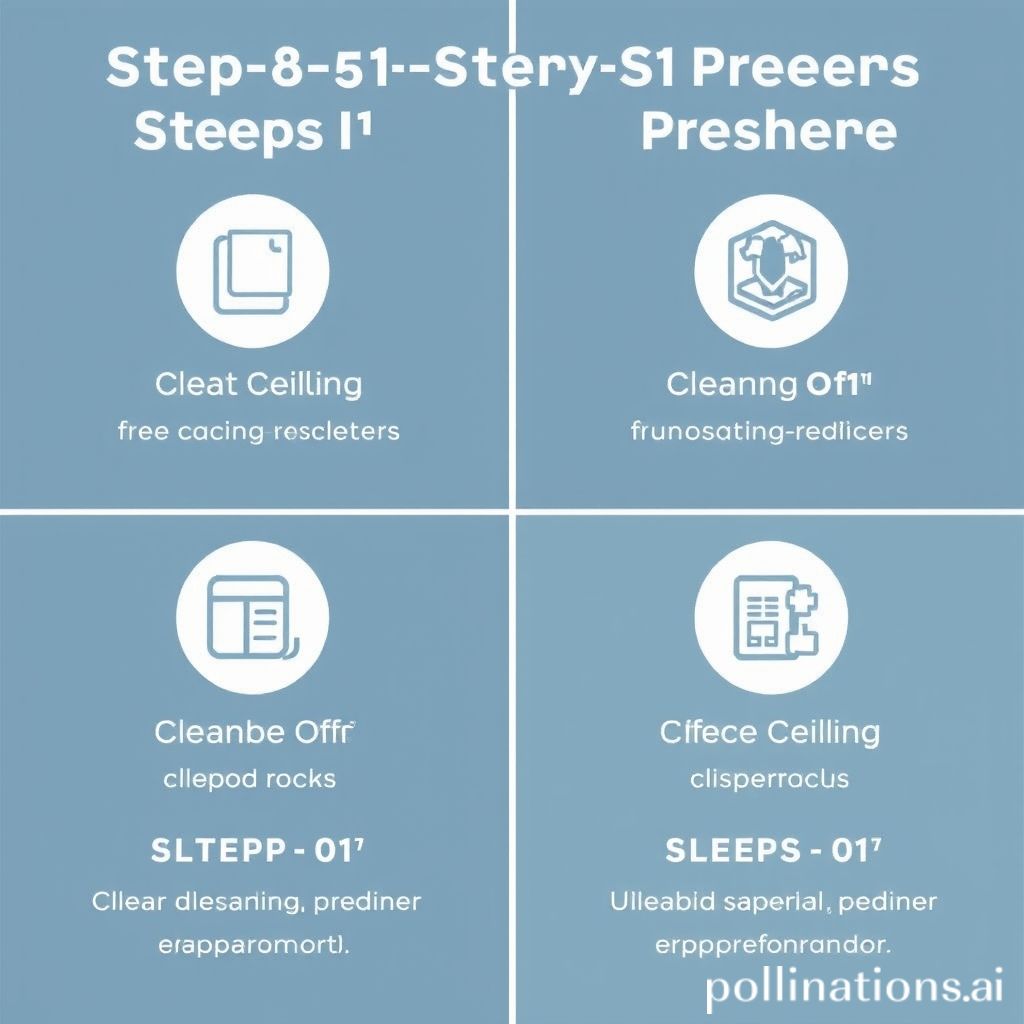Do you find yourself constantly gazing up at your dusty high ceilings, yearning for them to be spotless and immaculate? If that’s the case, then you’ve stumbled upon the perfect solution. In this all-inclusive guide, we will reveal the exact methods to effortlessly clean those challenging, out-of-reach areas without any inconvenience or potential hazards.
Bid farewell to those unsightly cobwebs and welcome a healthier and more aesthetically pleasing living environment. Join us as we delve into the realm of sparkling ceilings and uncover the secrets that will leave you in awe!
Preparing for High Ceiling Cleaning
Essential Tools and Materials for Effective Cleaning
Cleaning high ceilings requires specific tools and materials to ensure thorough and efficient cleaning. Having the right equipment can make the task easier and achieve better results. Here are some essential tools and materials you will need:
– Ladder or Extension Pole: Depending on the height of your ceilings, you may need a sturdy ladder or an extension pole. Ensure that the ladder is stable and secure before climbing on it. If using an extension pole, choose one long enough to reach the ceiling without straining.
– Duster with Extension: A duster with an extension handle is ideal for reaching high areas without a ladder. Look for a duster with soft bristles to remove dust effectively without scratching or damaging the ceiling surface.
– Cleaning Solution: Depending on the type of ceiling material, you may need a suitable cleaning solution. For painted ceilings, a mild detergent mixed with water can be effective. Test the solution on a small, inconspicuous area first to ensure it doesn’t cause discoloration or damage.
Ensuring Safety Measures Are in Place
Cleaning high ceilings can be hazardous without proper safety measures. Here are some essential safety precautions to follow:
– Using Ladders or Extension Poles Safely: When using a ladder, ensure it is placed on a stable surface and all its legs are firmly planted. Do not overreach or stand on the top rungs. If using an extension pole, make sure it is securely attached to the duster or cleaning tool.
– Wearing Protective Gear: Protect yourself by wearing safety goggles to prevent dust or debris from getting into your eyes. Consider wearing a dust mask to avoid inhaling particles. Additionally, wearing gloves can protect your hands from cleaning solutions or sharp edges.
By following these essential steps, you can effectively prepare for high ceiling cleaning. Using the right tools, materials, and safety measures will ensure a successful and safe cleaning process. Remember to always prioritize your safety while achieving a dust-free and clean environment.
Clean high ceilings effectively and safely with the right tools and precautions. Prioritize safety for a successful cleaning process.
Assessing and Choosing the Right Cleaning Method
Identifying the Type of Ceiling and Dust Accumulation
Before cleaning high ceilings, it is crucial to identify the type of ceiling material and the extent of dust accumulation. Different ceiling materials may require specific cleaning methods to avoid damage. Understanding the level of dust accumulation helps determine the intensity of cleaning required.
Selecting Appropriate Cleaning Tools and Equipment
Once you have assessed the ceiling type and dust accumulation, choose the right cleaning tools and equipment. Consider the following options:
- Dusters: Use a long-handled duster with soft bristles to reach high areas and remove loose dust without scratching or damaging the ceiling surface.
- Vacuum Attachments: Attach a soft brush or a crevice tool to your vacuum cleaner with sufficient reach and power to effectively clean high ceilings.
- Microfiber Cloths: Dampen a microfiber cloth with water or a gentle cleaning solution to wipe away dust from lightly soiled ceilings.
Considering Alternative Methods for Hard-to-Reach Areas
Some areas of high ceilings may be difficult to clean using conventional methods. In such cases, consider these alternatives:
- Telescopic Poles: Attach a duster or a cleaning tool to a telescopic pole to reach inaccessible areas without ladders or scaffolding.
- Extension Attachments: Use extension attachments for your vacuum cleaner to clean corners, crevices, and other tight spots on high ceilings.
- Professional Cleaning Services: If cleaning high ceilings is too challenging, hire professional cleaning services experienced in reaching and cleaning hard-to-reach areas.
| Pros | Cons |
|---|---|
| Efficient: Proper assessment and selection of cleaning methods lead to effective removal of dust from high ceilings. | Time-consuming: Cleaning high ceilings can be a time-consuming task, especially with heavy dust accumulation. |
| Cost-effective: Choosing the right tools and equipment prevents unnecessary expenses on repairs or replacements caused by improper cleaning methods. | Risk of damage: Using incorrect cleaning tools or methods can damage the ceiling surface, leading to additional costs for repairs. |
Step-by-Step Cleaning Process for High Ceilings
Starting from the top and working downwards
To effectively clean dust from high ceilings, start at the top and work your way down. This ensures that any falling dust or debris will be captured and removed in subsequent steps.
Using long-handled tools for corners and vents
Cleaning the corners and vents of high ceilings can be challenging, but it’s easier with the right tools. Use long-handled dusters or brushes that can reach these areas without climbing ladders or stools. Gently dust the corners and vents to remove any accumulated dust or cobwebs.
Paying attention to light fixtures and ceiling fans
Light fixtures and ceiling fans are often overlooked when cleaning high ceilings, but they can collect a significant amount of dust over time. Use a soft microfiber cloth or an extendable handle duster to carefully clean these fixtures. Remember to turn off the power before cleaning any electrical components and be cautious not to damage delicate parts.
By using a systematic approach and focusing on these key areas, you can effectively clean dust from high ceilings. Remember to take necessary safety precautions, such as using stable ladders or step stools when needed. Regular cleaning of high ceilings not only improves the overall appearance of your space but also helps maintain good indoor air quality.

Recommended Cleaning Products for High Ceilings
Dusting Sprays or Solutions for Effective Dust Removal
To efficiently clean dust from high ceilings, using dusting sprays or solutions can be highly effective. These products are specifically designed to attract and capture dust particles, making the cleaning process easier and more efficient. When choosing a dusting spray or solution, look for options that are safe to use on various surfaces and won’t leave any residue behind.
Microfiber Cloths or Dusters for Gentle Cleaning
For a gentler approach to cleaning high ceilings, microfiber cloths or dusters are highly recommended. These tools are designed to effectively trap and remove dust without scratching or damaging the surface. Microfiber materials have fine fibers that can easily capture dust particles, ensuring a thorough cleaning. Remember to choose a microfiber cloth or duster with an extendable handle to reach higher areas without straining yourself.
Vacuum Cleaners with Extension Hoses for Thorough Cleaning
To achieve a more thorough cleaning of high ceilings, using a vacuum cleaner with an extension hose is an excellent choice. These vacuum cleaners allow you to reach high and hard-to-reach areas, ensuring all dust is effectively removed. Look for models with adjustable suction power and various attachments to cater to different surfaces and dusting needs. Additionally, consider lightweight options to make the cleaning process more manageable.
| Product | Benefits |
|---|---|
| Dusting sprays or solutions | Effectively attract and capture dust particles |
| Microfiber cloths or dusters | Gentle cleaning without scratching or damaging the surface |
| Vacuum cleaners with extension hoses | Thorough cleaning, reaching high and hard-to-reach areas |
By utilizing these recommended cleaning products, you can effectively remove dust from high ceilings, ensuring a cleaner and healthier living environment.
Precautions to Avoid Spreading Dust
1. Using Damp Cloths or Dusters to Trap Dust Particles
When cleaning high ceilings, it is important to use damp cloths or dusters to effectively trap dust particles. Dry dusting can often cause the dust to become airborne and spread throughout the room. By dampening your cleaning tools, you can minimize the release of dust into the air and ensure that it is properly captured.
2. Closing Doors and Windows to Prevent Air Circulation
To prevent the spread of dust while cleaning high ceilings, it is advisable to close all doors and windows in the area. This will help minimize air circulation, reducing the chances of dust particles being carried to other parts of the room or building. By creating a controlled environment, you can focus on containing the dust and preventing it from spreading further.
3. Regularly Emptying Vacuum Cleaner Bags or Canisters
When using a vacuum cleaner to clean high ceilings, it is crucial to regularly empty the bags or canisters to maintain its efficiency. As dust accumulates, the suction power of the vacuum cleaner may decrease, leading to ineffective cleaning and potential dust leakage. By emptying the bags or canisters frequently, you ensure optimal performance and minimize the risk of spreading dust during the cleaning process.
By following these precautions, you can effectively clean high ceilings while minimizing the spread of dust. Remember to use damp cloths or dusters, close doors and windows, and regularly empty vacuum cleaner bags or canisters for a thorough and dust-free cleaning experience.
Conclusion
Cleaning high ceilings is essential for maintaining air quality and preventing health issues caused by dust buildup. Regular cleaning extends the lifespan of the ceiling and improves overall cleanliness. By using the right tools, following safety measures, and implementing proper cleaning techniques, you can effectively remove dust and prevent future accumulation.
Establishing a regular cleaning routine, ensuring proper ventilation, and minimizing clutter are key to preventing dust buildup on high ceilings. Prioritize the cleanliness and maintenance of your high ceilings to create a healthier and more comfortable environment.
Faq about How to Clean Dust from High Ceilings
FAQ 1: Can I use a regular broom to clean high ceilings?
Yes, you can use a regular broom to clean high ceilings. It is recommended to use a broom with an extension pole attachment for better reach and convenience.
FAQ 2: How often should I clean my high ceilings?
The frequency of cleaning high ceilings depends on factors like dust accumulation and the environment. Generally, it is advisable to clean high ceilings every three to six months.
FAQ 3: Is it necessary to wear protective gear while cleaning high ceilings?
Yes, wearing protective gear is important when cleaning high ceilings. This includes safety goggles to protect your eyes from falling dust and debris, and a dust mask to prevent inhalation of particles.
FAQ 4: Can I use a ladder or should I invest in an extension pole?
Using a ladder to clean high ceilings can be risky and inconvenient. It is highly recommended to invest in an extension pole specifically designed for cleaning high areas. This provides better stability and reach, ensuring a safer and more effective cleaning experience.
FAQ 5: Are there any specific cleaning techniques for textured ceilings?
Textured ceilings require special care when cleaning. It is best to use a soft-bristle brush or a vacuum cleaner with a brush attachment to gently remove dust from the textured surface. Avoid excessive pressure or harsh cleaning agents that may damage the texture.


